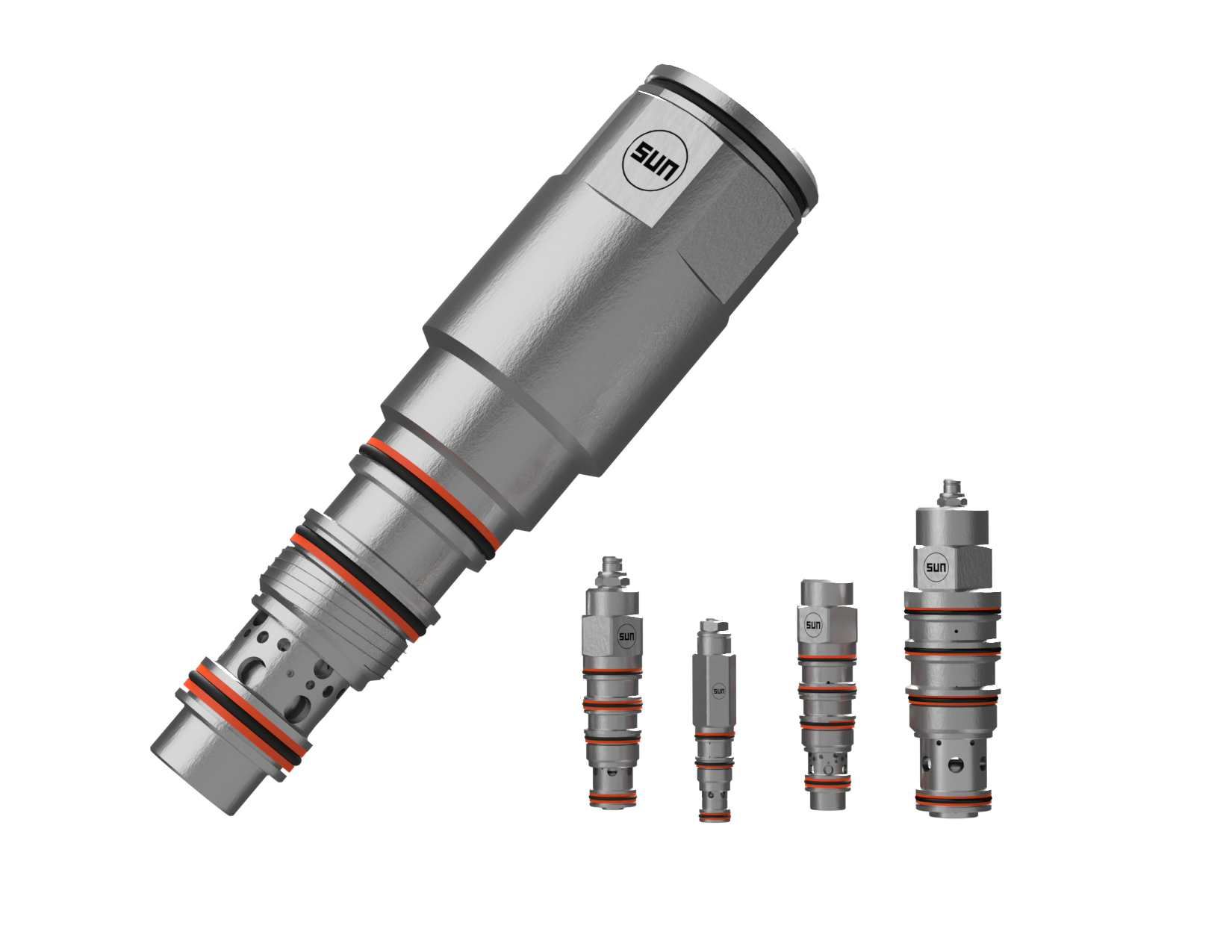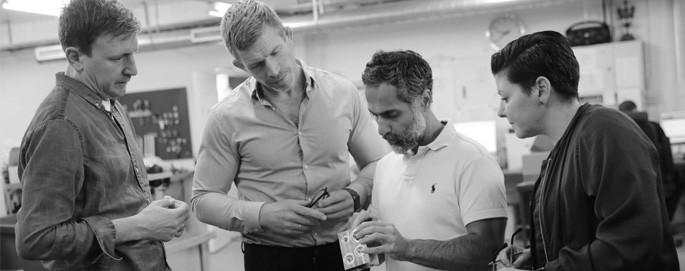
Load holding valves are used in applications where it is necessary to prevent a load from moving when the directional valve is in the closed position. Most spool-type directional valves have some internal leakage, which means they cannot hold a load in a fixed position over an extended period. Therefore can a counterbalance valve be a better solution. A load holding valve can also serve as a safety valve in the event of, for example, a hose rupture. In such cases, it should be mounted directly on the cylinder or other actuator. This is preferably done using a banjo manifold, which enables a compact and secure installation with minimal pressure losses and a reduced risk of hose failure.
Load holding valves are among the more complex type of hydraulic valves, making it especially important to select the correct model. Choosing the wrong valve can pose serious safety risks—such as the inability to hold a load securely—but can also result in inefficient system performance. Common problems caused by incorrect sizing include inadequate operating speed, system instability (shaking or jerking) or overheating. To ensure that your hydraulic system operates safely and efficiently, we recommend contacting one of our sales engineers. We’ll be happy to help you find the right solution tailored to your application.
All load holding valves—except for pilot-operated check valves—are set to a specific opening pressure. As a general rule, this pressure should be set to 1.3 times the maximum load pressure. To activate the valve’s function, a pilot pressure is required, which is normally taken from the opposite side of the system, or in some cases via an external pilot line, depending on the application and system design.
All load holding valves are equipped with a built-in check valve that allows free flow in the non-load-holding direction. These check valves are available with different spring settings, typically 1.7 bar or 0.3 bar. A 1.7 bar spring is recommended for improved system stability, while a 0.3 bar spring is used when minimizing pressure drop is a priority.
There are several options for pilot ratios, with 3:1 being the standard—though both higher and lower ratios are available depending on the application. A 3:1 pilot ratio means that a pilot pressure of 50 bar is required to open the valve against a load of 150 bar. For vertical cylinder applications with hanging loads, a lower pilot ratio is preferable to ensure smooth and controlled movement. In other applications, a higher pilot ratio is generally desirable, as it allows the valve to open with lower pilot pressure—making it easier to lower or move the load.
Be aware that any back pressure in port 2 is added to the valve’s set opening pressure. This is common in systems that include a downstream restriction, such as a throttle or a proportional valve. If back pressure is an issue in your application, we recommend using an externally drained valve, specifically designed to handle such conditions.
Externally drained load holding valves are unaffected by back pressure in port 2. In standard valves, back pressure can negatively impact performance, as it directly influences the opening pressure setting. This often results in the need for higher pilot pressure to open the valve, potentially reducing system performance. Externally drained valves are especially recommended in regenerative systems, in applications using meter-out throttling, proportional or servo valves, and in master-slave cylinder configurations where high system stability is required. CW** models have four ports, with a dedicated drain port that should be connected downstream of any restriction. CA** models feature three ports and can be retrofitted in systems where unexpected back pressure has become a problem.
Unlike many other hydraulic components, load holding valves should not be oversized. An oversized valve can cause system instability and reduced performance, particularly at low flow rates. To ensure stable operation, versions with lower flow capacity—but with the same cavity—are available.
The simplest valve intended for holding loads is a pilot operated check valve. However, this type of valve only has an open or closed positions, and is unable to control the movement of the load. It is also unsuitable for applications where the load is transferred over a vertical position, as it risks moving away. In that case it’s better to choose a load holding valve that is often called “over center-valve”. Additionally, pilot-operated check valves lack a relief function, which is essential to protect the system against pressure buildup due to thermal expansion. While pilot-operated check valves are well-suited for simple applications, in cases where control, safety, or stability is critical, a load holding valve is the better choice. Pilot-operated check valves and load holding valves generally share the same cavity, making them interchangeable in most cases.



Hydnet
EA Rosengrens gata 29
421 32 Västra Frölunda
+46 31 - 499 490
info@hydnet.se